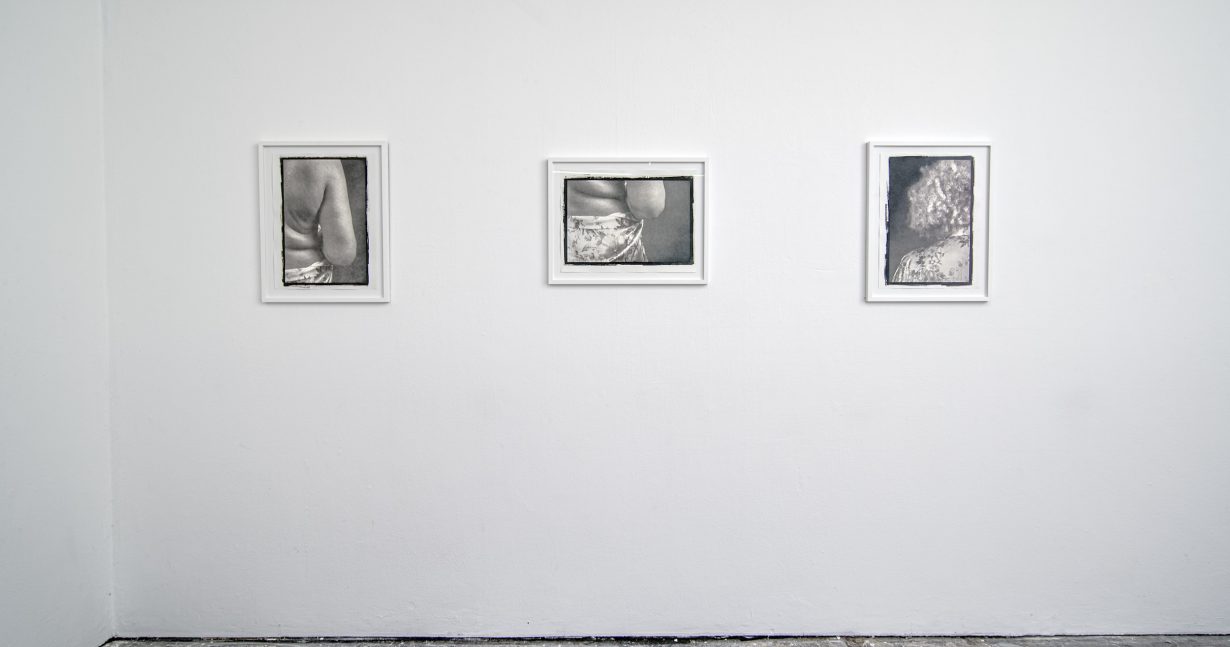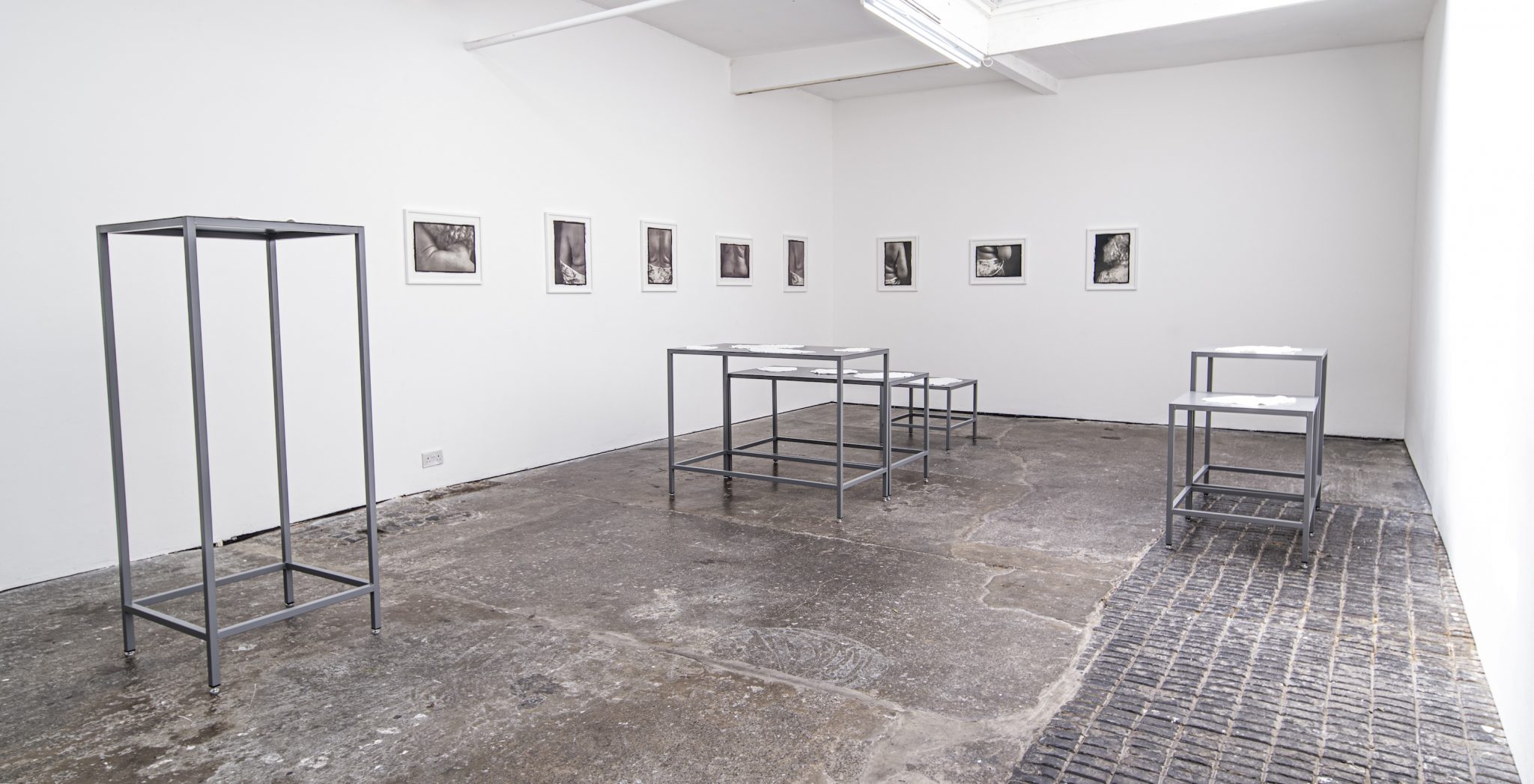In Ah, Sugar, the artist conjures the fraught space of the domestic sphere in sculptures and photographs that join the sensuous with the symbolic
In Marlene Smith’s exhibition the titular substance is the metaphorical ground upon which personal and communal histories are imprinted. On both sides of the Atlantic, artists have considered how sugar connects histories of the slave trade and indentured servitude to racial capitalism’s neocolonial ventures (and misadventures) as endured today. Smith has confected, from fondant icing rolled into thin slabs of irregular shape, a suite of sculptures named after members of her family. In these sheets are the impressions of embroidered and crocheted objects – doilies, table runners, vase covers – inherited from the artist’s mother. All 14 of the sculptures are presented on grey metallic tables of varying heights arranged across the gallery.
Some of the sculptures might resemble 3D-printed silicone, but closer inspection reveals, amid some of the pieces’ complex networks of peaks and grooves, powdery residue and tiny bits of fondant dislodged in their making. In a few, small sections have broken off, others have folded in on themselves; several are warped or raised off the table’s surface in idiosyncratic ways. Miss Eva (all works 2024) sits on a stand tall enough to afford a view of its uneven profile, while several of the sculptures’ raw edges suggest fragments ripped from a larger whole, their roughness contrasting with the works’ quaint curlicues (as in Sa Golda) and tidy grids (Auntie Josette). With these uniquely patterned pieces Smith orchestrates a synthesis of opposites: the manual and the (seemingly) automated, which is to say the historical and the contemporary, presence and absence, uniformity and individuality.

The doily’s namesake, a seventeenth-century cloth merchant, once described his eponymous crocheted garments as ‘affordable’ and ‘genteel’. It is this contradiction that later made the item an ideal accoutrement in the ‘West Indian’ front room, a space that, according to the theorist Stuart Hall – a Jamaican émigré to Britain, like Smith’s parents – telegraphed the aspirations of Caribbean migrants. But the home is not only a space where the pageantries of respectable working- and middle-class life are conducted. For Smith, it has previously functioned as a studio, and a source of potential mediums and themes: from her mother’s crocheted vase jacket in Art History (1987), evoking the history of black women’s creative labour, to Good Housekeeping III’s (1985/2023) chicken wire, jay cloth and house plaster sculpture of Dorothy ‘Cherry’ Groce, who was shot by police at the entrance to her home in 1985, the domestic sphere is, for Smith, a microcosm of the world.
How, then, to connect the accompanying eight black-and-white photographs (all untitled) of Smith taken by friend and longtime collaborator Ajamu, none of which seem immediately related to the objects made of fondant icing or the domestic as a theme? One way is through the satin dressing gown Smith wears in these, evoking the private ritual of dressing and undressing. Another is the sugarcane paper on which the photographs have been printed, taking us back to the fraught substance of the exhibition’s title. In using this finely textured support and leaving a painterly border for expressive effect, Ajamu directs our attention from an exercise of meaning-making (which can be all too easily inferred from the work of Black, women and queer artists) towards a consideration of the formal and manual processes through which the work has been created. Smith’s body and hair, too, have been cropped and captured up close to highlight the materiality and physicality of their form: fleshy folds and smooth skin, the soft texture of her voluminous curls. So we have, from both parts of the exhibition, an invitation to consider how the sensuous and the symbolic are conjoined in the act of transforming life’s bittersweet raw material into works of art.
Marlene Smith, Ah, Sugar, Cubitt, London, 22 August – 18 October; Reid Gallery, The Glasgow School of Art, 2 November – 14 December
